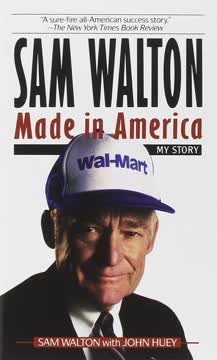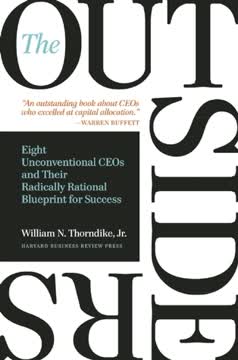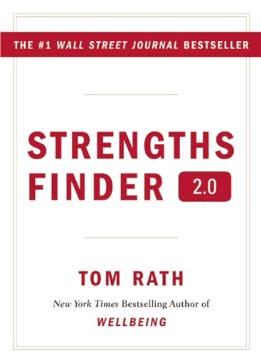Key Takeaways
1. Storytelling is a powerful leadership tool that engages, inspires, and drives action
"Experience is the best teacher. A compelling story is a close second."
Storytelling as leadership tool: In today's business world, storytelling has emerged as a crucial leadership skill. Many successful organizations, including Microsoft, Nike, and Procter & Gamble, intentionally use storytelling as a key leadership tool. Stories have the power to:
- Engage audiences more effectively than dry facts or bullet points
- Inspire and motivate teams to take action
- Communicate complex ideas in a memorable way
- Build trust and credibility with employees and customers
- Drive organizational change and shape company culture
Why storytelling works: Stories are effective because they tap into human psychology and memory. Research shows that facts presented in a story format are 20 times more likely to be remembered than facts alone. Stories also appeal to different learning styles (visual, auditory, kinesthetic), making them accessible to a wider audience.
2. Use the CAR (Context, Action, Result) framework to structure compelling stories
"A well-told business story isn't the same as a romance novel or a Hollywood movie. It has a simpler structure. But it does have one."
CAR framework: The Context, Action, Result (CAR) structure provides a simple yet effective way to craft business stories:
- Context: Set the scene, introduce the main character, and establish the challenge or goal
- Action: Describe what happened, including obstacles and how they were overcome
- Result: Share the outcome and lessons learned
Key elements: Within this framework, include:
- Subject (S): A relatable main character
- Treasure (T): The goal or objective
- Obstacle (O): The challenge or conflict
- Right lesson (R): The key takeaway
- Why (Y): The reason for telling the story
Remembering CAR = STORY can help you structure your narratives effectively.
3. Make your stories concrete and relatable to maximize impact
"Concrete ideas are far more memorable than abstract ones."
Concrete vs. abstract: Abstract concepts can be difficult for audiences to grasp and remember. By making your stories concrete and specific, you can:
- Help listeners visualize and understand complex ideas
- Make your message more memorable and impactful
- Demonstrate real-world applications of your concepts
Techniques for concreteness:
- Use specific examples and details
- Employ vivid sensory language
- Avoid jargon and technical terms
- Relate stories to common experiences
- Use analogies to explain unfamiliar concepts in familiar terms
For instance, instead of talking about "high potential shoppers," use a specific persona like "Lisa" to make the concept more tangible and relatable.
4. Leverage emotion and empathy to connect with your audience
"If a picture is worth a thousand words, then a metaphor is worth a thousand pictures."
Power of emotion: Emotional stories are more engaging and memorable than purely factual ones. By incorporating emotion into your stories, you can:
- Create a stronger connection with your audience
- Increase the likelihood of your message being remembered and acted upon
- Motivate and inspire your team more effectively
Empathy in storytelling: Empathy is particularly powerful in business narratives. By helping your audience empathize with the characters in your story, you can:
- Make your message more relatable and impactful
- Influence decisions by helping decision-makers understand the human impact
- Build stronger relationships with employees and customers
To generate empathy, focus on personal experiences, use vivid details, and show the thoughts and feelings of the characters in your stories.
5. Employ metaphors and analogies to simplify complex ideas
"If a picture is worth a thousand words, then a metaphor is worth a thousand pictures."
Power of metaphors: Metaphors and analogies can help you:
- Explain complex concepts in simple, familiar terms
- Make abstract ideas more concrete and memorable
- Create powerful mental images that stick with your audience
Effective use of metaphors:
- Choose metaphors that are familiar to your audience
- Ensure the metaphor accurately represents the concept you're explaining
- Use metaphors consistently throughout your communication
Examples:
- "Consumer is boss" to emphasize customer focus
- "First moment of truth" to describe the importance of shelf presence in retail
To generate metaphors, try techniques like the Zaltman Metaphor Elicitation Technique (ZMET) or simply asking your audience for comparisons.
6. Use stories to define company culture and values
"A culture is made—or destroyed—by its articulate voices."
Stories shape culture: The stories told within an organization play a crucial role in shaping its culture. They can:
- Illustrate company values in action
- Set expectations for behavior
- Create a shared sense of identity and purpose
Types of culture-shaping stories:
- Origin stories that explain the company's founding and purpose
- Stories of employees embodying company values
- Cautionary tales that illustrate what not to do
- Stories that celebrate successes and learning from failures
For example, the story of a CEO caught in the rain choosing to park far away to leave closer spots for customers powerfully illustrates a commitment to customer service.
7. Harness storytelling to motivate teams and build courage
"You may have to fight a battle more than once to win it."
Motivational stories: Stories can be powerful tools for motivation and building courage. They can:
- Inspire persistence in the face of setbacks
- Illustrate the rewards of taking risks
- Show how others have overcome similar challenges
Types of motivational stories:
- Underdog stories of triumph against the odds
- Tales of perseverance and eventual success
- Stories of personal growth and transformation
For instance, sharing the story of Abraham Lincoln's multiple failures before becoming president can inspire persistence in the face of setbacks.
8. Utilize stories for effective coaching, feedback, and problem-solving
"Feedback is the breakfast of champions."
Storytelling in coaching: Stories can be effective tools for:
- Providing constructive feedback
- Illustrating desired behaviors
- Demonstrating problem-solving techniques
Techniques:
- Use "two-roads" stories to illustrate different paths and their outcomes
- Share personal failure stories to build trust and teach lessons
- Use metaphorical stories to provide feedback indirectly
For example, the story of Nathan confronting King David with a metaphorical tale demonstrates how stories can be used to provide difficult feedback effectively.
9. Encourage innovation and creativity through storytelling
"If people aren't laughing at your ideas, you aren't being creative enough."
Stories foster creativity: Stories can stimulate innovation by:
- Encouraging out-of-the-box thinking
- Illustrating creative problem-solving approaches
- Creating a culture that values and rewards creativity
Creativity-boosting stories:
- Tales of unconventional solutions to problems
- Stories of accidental discoveries or inventions
- Narratives that challenge assumptions
For instance, sharing the story of James Watt's fascination with steam from a kettle leading to the invention of the steam engine can inspire employees to pursue their creative interests.
10. Use stories to improve sales and customer service
"A sale is not something you pursue. It's something that happens to you while you're immersed in serving your customer."
Storytelling in sales: Stories can be powerful tools in sales and customer service by:
- Building trust and rapport with customers
- Illustrating product benefits in relatable ways
- Addressing objections indirectly
Effective sales stories:
- Customer success stories
- Origin stories of products or services
- Personal anecdotes that relate to customer needs
For example, instead of listing features, tell a story about how a product solved a specific customer's problem. This approach makes the benefits more tangible and relatable to potential buyers.
Last updated:
FAQ
What's Lead with a Story about?
- Storytelling in Business: Lead with a Story by Paul Smith focuses on the power of storytelling as a tool for leaders in business to captivate, convince, and inspire their audiences.
- Practical Applications: The book provides practical advice and techniques for crafting effective business narratives, addressing 21 leadership challenges with relevant stories.
- Cultural and Emotional Impact: Smith emphasizes how storytelling can shape organizational culture and enhance emotional connections, leading to improved performance and collaboration.
Why should I read Lead with a Story?
- Enhance Leadership Skills: The book helps develop storytelling skills crucial for effective leadership, teaching how to communicate ideas that resonate with audiences.
- Real-World Examples: Filled with real-life stories, the book illustrates storytelling principles in action, making concepts relatable and easier to understand.
- Practical Framework: Smith offers a clear framework for structuring stories, aiding readers in applying lessons in their professional contexts.
What are the key takeaways of Lead with a Story?
- Story Structure: Introduces the CAR (Context, Action, Result) structure for crafting clear and impactful stories.
- Authenticity and Connection: Emphasizes the value of authenticity, encouraging leaders to share personal experiences to build trust and connection.
- Diversity and Inclusion: Highlights the importance of valuing diversity and inclusion, using stories to foster a collaborative environment.
What are the best quotes from Lead with a Story and what do they mean?
- “Experience is the best teacher. A compelling story is a close second.”: Highlights storytelling's power in conveying memorable lessons and experiences.
- “A culture is made—or destroyed—by its articulate voices.”: Stresses the role of communication in shaping organizational culture and the influence of leaders' stories.
- “Nobody, but nobody, reads policy manuals except for the person who wrote them.”: Points out the ineffectiveness of traditional policy communication, advocating for engaging stories instead.
How does Paul Smith suggest structuring a story in Lead with a Story?
- CAR Framework: Smith introduces the Context, Action, Result framework for structuring stories to ensure coherence and impact.
- Context: Sets the stage by answering where and when the story takes place, who the main character is, and what obstacles they face.
- Action and Result: Describes the main character's challenges and the story's outcome, providing clarity and engagement.
What are some storytelling techniques mentioned in Lead with a Story?
- Use of Dialogue: Incorporating dialogue makes stories more engaging and relatable, allowing emotional connections with characters.
- Concrete Examples: Emphasizes using specific examples over abstract concepts to make stories relatable and understandable.
- Repetition for Emphasis: Repeating key phrases or ideas enhances impact and reinforces the message, creating a rhythm that engages the audience.
How can storytelling improve team collaboration according to Lead with a Story?
- Building Relationships: Personal stories help team members discover common values, fostering deeper connections and a supportive environment.
- Creating a Safe Space: Encouraging storytelling allows expression of vulnerabilities, promoting trust and enhancing teamwork.
- Shared Experiences: Stories of overcoming challenges inspire teams, creating a sense of shared purpose and encouraging collaboration.
What role does diversity play in storytelling as discussed in Lead with a Story?
- Valuing Different Perspectives: Emphasizes that diverse teams outperform homogenous ones, with stories highlighting inclusion's benefits.
- Creating Empathy: Stories reflecting diverse experiences foster empathy, leading to better collaboration and innovation.
- Cultural Awareness: Encourages sharing stories of diverse individuals' challenges and successes to create an inclusive culture.
How does Lead with a Story suggest handling difficult conversations or feedback?
- Be Honest and Open: Advocates for transparency, using personal stories to soften the impact and make conversations relatable.
- Use Stories as Teaching Tools: Illustrates lessons from past mistakes, helping audiences understand feedback's importance without feeling attacked.
- Encourage Dialogue: Engaging the audience in conversation about the story creates a collaborative atmosphere for better understanding.
How can I start implementing storytelling in my leadership style based on Lead with a Story?
- Identify Key Stories: Find personal or professional anecdotes that illustrate important lessons or values for your audience.
- Practice the CAR Structure: Use the Context, Action, Result framework to structure stories effectively, ensuring clear communication.
- Share Regularly: Incorporate storytelling into regular communication, enhancing leadership presence and inspiring your team.
What are two-roads stories and how do they work in Lead with a Story?
- Definition: Two-roads stories illustrate two different paths—one leading to success and the other to failure, highlighting choice consequences.
- Real Examples: Provides examples of real people with different outcomes based on decisions, making lessons relatable and impactful.
- Encouraging Reflection: By presenting both paths, these stories encourage reflection on personal choices, leading to thoughtful decision-making.
How can I use metaphors effectively in my storytelling as suggested in Lead with a Story?
- Enhance Understanding: Metaphors simplify complex ideas by relating them to familiar concepts, aiding audience comprehension.
- Create Emotional Connections: Evoke emotions and create deeper connections, making stories more memorable.
- Generate Ideas: Techniques like the magazine collage exercise help find creative ways to express ideas and engage audiences.
Review Summary
Lead with a Story receives mixed reviews, with an average rating of 3.84/5. Positive reviewers praise its practical storytelling techniques and engaging business examples. Critics find it repetitive, overly focused on P&G, and lacking in cross-cultural perspectives. Some readers appreciate the book's structure and storytelling tips, while others find it tedious and unoriginal. Many reviewers agree that storytelling is a valuable leadership skill, but opinions vary on how effectively the book teaches this skill.
Similar Books










Download PDF
Download EPUB
.epub digital book format is ideal for reading ebooks on phones, tablets, and e-readers.





